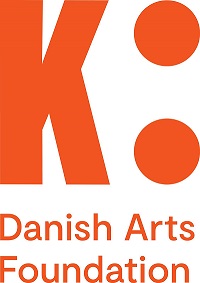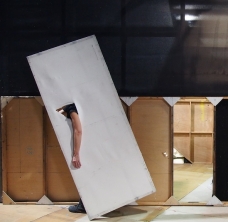Synthesis, a new performative-installation conceived, planned and curated by choreographer Tzeni Argyriou and visual artist Vassilis Gerodimos, is coming to the GNO Alternative Stage at the Stavros Niarchos Foundation Cultural Center on 29, 30 and 31 October 2021. The work was commissioned by the GNO Alternative Stage and will be presented as part of the tribute to the bicentennial of the Greek Revolution.
More than 30 artists from the whole spectrum of performing and visual arts along with students of the GNO Professional Dance School join their forces to create a long-duration work that correlates the intricate workings of the national liberation struggle with the very process of creating a complex collective artistic endeavour.
The work was created through months-long historical and artistic research and will be presented during three days, each of them conceptually corresponding to one of the three stages of the Greek Revolution (the intoxication of the initial outbreak, the middle-period introversion, and the late-phase fatigue and ultimate prevalence), offering a new, open-ended and collective account of the revolution.
During the three days of the event on the GNO Alternative Stage, audience members will have the possibility to move within the installation, follow different approaches from different viewpoints, decide for themselves the length of their stay in the venue, create their own synthesis, and ultimately experience fragments of the Revolution in the here and now.
Synthesis: Public hours 19.30 (Friday), 12.00, 16.00, 19.30 (Saturday), 12.00, 16.00 (Sunday). Each performative unit lasts approximately three hours.
This production, part of a tribute to the 2021 bicentennial of the Greek Revolution, is made possible by a grant from the Stavros Niarchos Foundation (SNF) [www.SNF.org].
Synthesis is a long-durational performative-installation treating the composite concept of Revolution. The complex conditions under which the Revolution was organised and conducted, agreements, collaborations, contradictions, ruptures, subversions, uncertainties, and acts of transcendence are correlated with the creation of a composite, collective artistic endeavour - a score involving creatives from the visual and performing arts and the social sciences.
The conversion of the Alternative Stage into a workshop space, where the limits between «stage» and «backstage» become permeable, brings out the significance of those invisible stages of an artistic research that do not follow a strictly linear course and help us shift from a unidimensional, static and didactic narrative of the Greek Revolution to an acccount that is personal, multiple and immersive.
In the early stages, in October 2021, the curators involved a large team of creatives from different fields of the arts and sciences in the preparation. A reading group was thus formed, which based its work on a collective process of historical and artistic research. It started with a series of discussions, in which historians and researchers presented archives, records, letters, poems, engravings etc., shedding light upon different aspects of the Greek War of Independence and raising a series of questions (concerning daily life, financial management, corruption, identity etc.).
Knowing from the outset that the history of the Greek War of Independence is an inexhaustible subject, the creative team appropriated some parts of these suggested sources and assumed the task of creating one or more «fragments», namely fragmentary narratives that give a picture of their own, without following a common logic or method.
All these different pieces of the work make up a bigger score that gets activated when the members of the creative team exceed the limits of their disciplines and participate in all of its parts, regardless of their capacity, - thus, the score constitutes an open-ended collective reading of the Revolution.
This score incorporates the long-duration performance and installation into a new collective body that sets the artists free from strict historical conventions. In turn, audience members are called upon to view the work from different angles, determine the time of their stay in the venue, and eventually create their own synthesis.
In Synthesis, the installation's constant transformation defines the work not spatially, meaning the space where the performative fragments get activated, but also in terms of time. The three days during which Synthesis is presented on the Alternative Stage refer to the three stages of the Revolution: the first day is for the intoxication of the initial outbreak of the Revolution, the second explores the middle-period introversion, and the third leads us to the late-phase fatigue. Those featured in Synthesis are not portrayed as individual heroes stripped of doubts, desires and needs; they go through different stages.
Finally, the structure of the installation itself consists of fragments, pieces of sets that have been used in past opera productions of the Greek National Opera and that, through this gesture, acquire a new identity. Under different circumstances, Greek fighters would also use materials they would find in the surrounding environment to make improvised weapons and banners. In fact, the main colours of the installation refer to the original banners of the revolutionaries. Digging up materials from the storage room of the Greek National Opera reveals a tendency towards in retrospection and renegotiation of our identity and of the system in which we act, realising that any effort to create narrative depends on the material(s) available.
For more information about the production process of Synthesis, you can visit the work's official website https://synthesis21.gr, which includes audio excerpts, videos, and photographs that digitally document the historical and artistic research.













